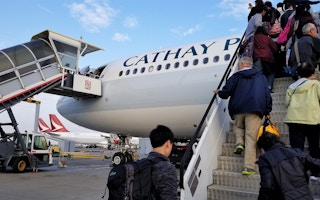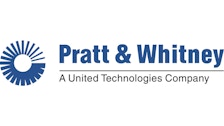About 400 to 600 commercial aircraft are retired and disassembled each year now, creating mountains of waste that include about 30,000 tonnes of aluminium, 1,800 tonnes of alloys, 1,000 tonnes of carbon fibre and 600 tonnes of other materials.
To make matters worse, with the sharp increase in air travel in the past few decades, as many as 18,000 planes could reach the end of their service life in the 14 years between 2017 and 2030, according to the International Civil Aviation Organisation.
Faced with the spectre of growing waste volumes, and with cost considerations in mind, aerospace companies and governments have developed ways to use fewer raw materials in manufacturing aircraft, and to replace them with recycled materials instead.
In 2014, American aerospace firm Boeing started to recycle about 22 million pounds of scrap aluminium from its factories annually, turning it into aircraft parts. In 2016, a coalition of European and Chinese companies, universities and research institutions, funded by their governments, started a three-year joint project to create renewable biomaterials that can be used to make airplane components.
Pratt & Whitney (P&W), an American aerospace manufacturer with global service operations, has set out a list of sustainability goals to be achieved by 2020. These include reducing greenhouse gas emissions from its operations by 15 per cent and increasing its total recycling rate to 90 per cent. It has introduced several major programmes to help it to fulfil these goals.
Forging greater sustainability
To cut its use of raw materials and generate less waste, the company uses innovative “near-net-shape” forging technologies. These produce parts that are closer in size and shape to the desired end products, so that fewer materials are needed to make them. The forgings also require less cutting and shaping, thus creating less waste.
“We had to create forging presses that have a higher degree of accuracy and give us more control over the manufacturing process, but it was worth it. By using near-net-shape forging, we have reduced our raw material use for some components by more than 25 per cent,” said Shaun Mace, engineering discipline chief of P&W’s Forging Centre of Excellence.
With greater control over the forging process, the company has also been able to design and use new and stronger alloys, enabling it to make certain parts smaller without losing any capabilities. It developed nickel-based alloys, for instance, that are now used for engine components such as turbine disks, compressor rotors and airfoils.
“With the conventional forging process, there is also a limit to the amount of recycled material you can use. As you keep recycling materials, over time, their alloys will change, until eventually you cannot use them in the conventional forging process. Since the near-net-shape forging process is more accurate and controllable, we can use more of the changed recycled materials,” said Mace.
Revert and reuse
P&W also has a Revert Management Programme to reuse scraps from its manufacturing process and engine overhauls and repairs.
Over the years, P&W has developed special alloys for some of its parts, including proprietary materials that are used for engine parts that need to withstand exceptionally high temperatures and stresses.
The company is working with suppliers around the world to ensure that they have practices in place to not only minimise the volume of scrap materials generated, wherever possible, but also maximise the amount that can be recycled.
P&W has also developed additional special alloy processes for the Revert programme that will enable it to recover an additional 500,000 to 700,000 pounds of material each year.
“Recycling is not just good for the environment but it also helps us to save money. The more successful we are at generating clean revert material, the fewer raw materials we need to purchase, and it is worth noting that it requires less energy to recycle alloys than to create alloys from raw materials.” said Peter Tibbetts, head of the Revert programme.
“As we continue to transform aviation and achieve a greener footprint with our products and services, we are also committed to minimising our impact on the environment in our global facilities, and among our suppliers,” said Lisa Szewczul, vice president of environment, health and safety at P&W. “This attention to total lifecycle cost is key as we continue to pursue aggressive sustainability goals while increasing business value.”













